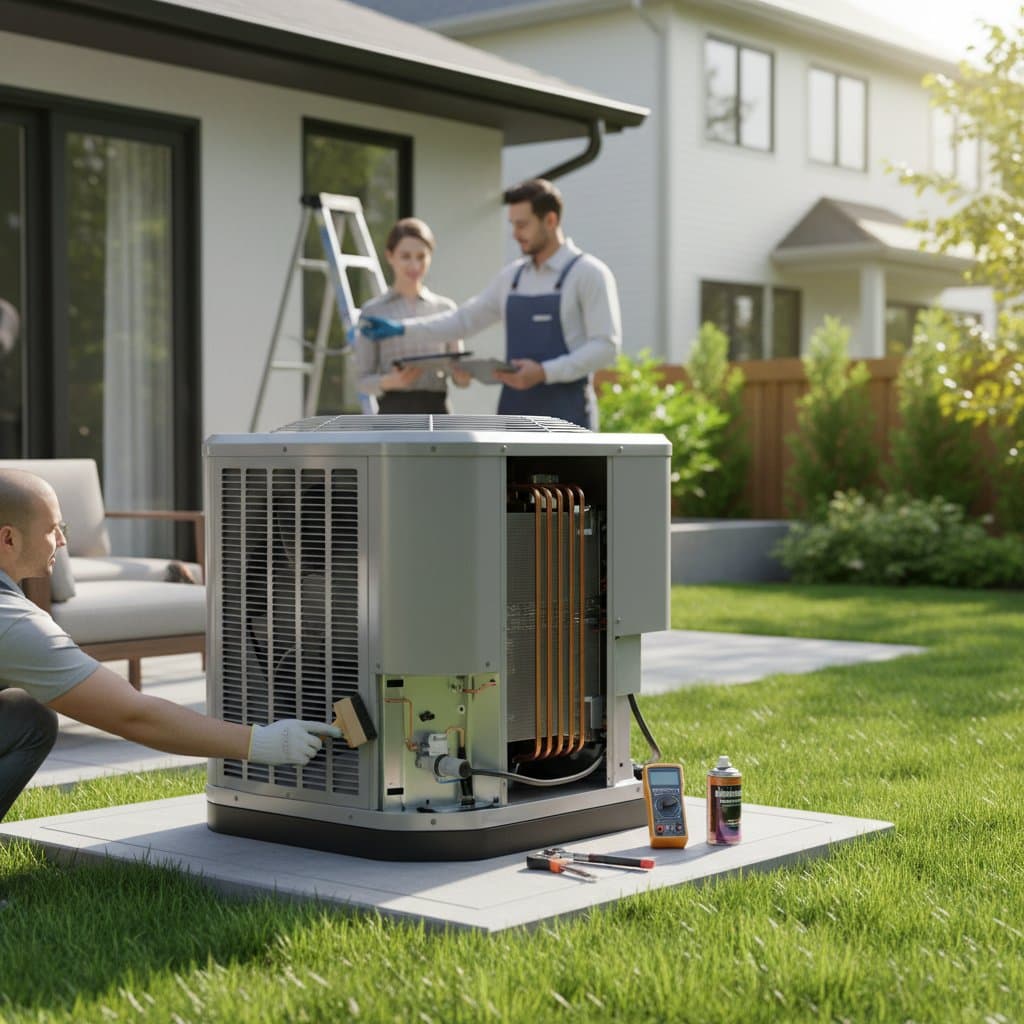Why Pre-Season AC Maintenance Saves Substantial Costs in 2025
Intense summer heat places significant demands on air conditioning systems. Homeowners face frustration when activating the unit on the initial warm day only to encounter warm air output or complete failure. Pre-season maintenance eliminates such issues. Investing time prior to peak temperatures yields financial savings, minimizes anxiety, and prolongs the operational life of cooling equipment.
The Consequences of Delaying Until Breakdown Occurs
Many homeowners overlook their air conditioner until functionality ceases. At that point, repair expenses escalate, replacement parts become scarce, and heating, ventilation, and air conditioning professionals face overwhelming demand. This scenario leads to prolonged discomfort and inflated costs.
Pre-season maintenance reverses this pattern. Early detection of minor problems occurs at lower expense, and optimal system performance persists throughout the season. The financial gap between an ignored unit and a serviced one amounts to hundreds of dollars in energy consumption and repair fees.
Essential Components of Pre-Season AC Maintenance
Effective pre-season service extends beyond filter substitution. It encompasses a thorough evaluation of cooling capacity, electrical integrity, and air circulation. Standard procedures include the following:
- Filter replacement every 30 to 90 days, based on usage patterns
- Refrigerant level verification to maintain appropriate cooling pressure
- Cleaning of coils on the indoor evaporator and outdoor condenser units
- Thermostat calibration for precise temperature regulation
- Electrical component inspection, including connections, capacitors, and relays
- Drain line flushing to avoid clogs that cause water accumulation
Professionals typically allocate 45 to 90 minutes for a standard residential setup. For those inclined toward self-service, certain tasks prove feasible with basic tools and careful execution.
Step-by-Step Guide to DIY Pre-Season AC Maintenance
Homeowners can perform fundamental upkeep independently before engaging experts. This approach sustains system condition and identifies potential concerns promptly.
- Deactivate power at the disconnect box adjacent to the outdoor condenser unit. Prioritize safety in all steps.
- Clear debris surrounding the outdoor unit, ensuring a minimum 24-inch clearance to facilitate airflow.
- Gently clean condenser fins using a soft brush or fin comb, straightening any bent sections with care.
- Install a new air filter matching the system specifications, typically 1 inch in thickness for central units.
- Test the thermostat by setting it to cooling mode and confirming smooth unit activation.
Grinding sounds or diminished airflow indicate the need to halt activities and consult a licensed technician.
Financial Benefits of Regular Maintenance
Clean coils and filters enhance air conditioner efficiency by 10 to 15 percent, per Energy Star guidelines. For an average household, this translates to annual savings of $100 to $300.
Issues such as low refrigerant, soiled blower wheels, or obstructed drains contribute to compressor malfunction, among the priciest repairs. Compressor replacement ranges from $1,200 to $2,000. In contrast, a pre-season tune-up costs $80 to $200, varying by location and equipment type. These figures underscore the value of proactive care.
Pitfalls to Avoid in Home Maintenance
Even diligent self-performers overlook critical elements that accelerate wear. Steer clear of these common oversights:
- Omitting drain line inspection, which permits clogs to cause overflow and damage near the air handler
- Selecting inappropriate filter ratings, as MERV 13 or higher may impede airflow in systems not equipped for them; opt for MERV 8 to 11 absent technician advice
- Disregarding outdoor unit clearances, where nearby shrubs or barriers retain heat and increase operational strain
- Dismissing atypical noises, such as rattling, buzzing, or clicking, which denote escalating electrical or mechanical faults
Addressing these promptly averts expensive interventions during heatwaves.
Indicators for Professional Intervention
Self-maintenance suits routine tasks, yet certain procedures demand expert equipment and expertise. Arrange a specialist evaluation under these conditions:
- The unit exceeds 8 years in age
- Energy expenses continue to climb despite filter changes
- The system activates and deactivates at short intervals
- Suspected refrigerant leakage appears, or frost forms on lines
Qualified technicians assess refrigerant pressure, blower motor current draw, and duct airflow metrics. Such diagnostics confirm adherence to manufacturer standards and local regulations.
Factors of Accessibility and Indoor Comfort
Individuals with mobility challenges may struggle with outdoor access or attic examinations. Numerous heating, ventilation, and air conditioning firms provide maintenance contracts featuring biannual inspections. These agreements prove more economical than isolated emergency services and uphold efficiency compliance.
In multi-level residences or homes with temperature-sensitive occupants, uniform air distribution proves essential. Request technician confirmation of appropriately sized supply and return vents. Distant rooms may require damper modifications for even cooling.
Overview of Maintenance Alternatives
| Service Type | Typical Cost | Best For | Time Required |
|---|---|---|---|
| DIY Basic Cleaning | $0 to $30 | Resourceful homeowners | 1 to 2 hours |
| Professional Tune-Up | $80 to $200 | Typical households | 1 hour |
| Annual Maintenance Plan | $150 to $350 | Properties with aging systems | 2 visits per year |
Strategies for Optimal Results
- Book services during moderate weather to secure technician availability and reduced rates.
- Document each maintenance session; records aid in troubleshooting and warranty preservation.
- Install a smart thermostat to track consumption and signal filter replacement needs.
- Trim foliage near the outdoor unit monthly during growth periods to sustain ventilation.
Secure Efficient Cooling Through Proactive Steps
Optimal timing for air conditioner attention precedes demand. A serviced system achieves rapid cooling, conserves energy, and endures longer.
View this process as a commitment to sustained comfort. Verifying refrigerant, cleansing coils, and confirming airflow at present prevents urgent repairs and guarantees consistent performance amid summer peaks. Prepare tools, ensure condenser access, or contact a reputable professional to proceed.





